No products in the cart.
WordPress Multilingual Plugins Mastery: Transform Your Site Today
The digital world has become increasingly interconnected, with over 5.3 billion internet users speaking diverse languages across the globe. For businesses seeking international growth, having a multilingual website is no longer optional—it’s essential. WordPress, powering 45% of all websites, lacks native multilingual support, creating a critical gap that specialized plugins must fill.
This comprehensive guide examines the leading WordPress multilingual solutions in 2025, comparing WPML, Polylang, TranslatePress, and Weglot across key features, pricing, and performance metrics. Whether you’re a small business owner, e-commerce entrepreneur, or enterprise developer, this analysis will help you select the perfect multilingual solution for your global expansion strategy.
I. Understanding WordPress Multilingual Solutions
1. Types Of Translation Approaches
WordPress multilingual plugins employ different methodologies to handle content translation, each with distinct advantages and limitations.
- Database-level vs. Frontend Rendering Methods: Database-level solutions create separate post entries for each language, storing translations directly in WordPress’s native structure. This approach, used by WPML and Polylang, offers deep integration with WordPress core functions but increases database complexity. Frontend rendering methods, employed by TranslatePress and Weglot, translate content dynamically during page load, maintaining a single content source while delivering localized versions to users.
- Manual vs. Automatic Translation Systems Integration: Manual translation workflows provide maximum control over content quality, allowing human translators to craft culturally appropriate messaging. Automatic translation systems leverage AI services like Google Translate, DeepL, and Microsoft Translator for rapid content localization. Modern plugins increasingly offer hybrid approaches, combining machine translation speed with human review capabilities.
- Hybrid Translation Workflows: The most sophisticated solutions combine automatic translation for initial content processing with manual review systems for quality assurance. This approach reduces translation costs while maintaining content quality, particularly effective for large-scale websites requiring frequent content updates.
2. Key Features Every Multilingual Plugin Should Have

Key Features Every Multilingual Plugin Should Have
- Language Switchers Implementation and Customization: Effective language switchers provide intuitive navigation between language versions, supporting various display formats including dropdown menus, flag icons, and text links. Advanced implementations automatically detect user location and browser preferences for seamless user experiences.
- Multilingual SEO Optimization Capabilities: Proper multilingual SEO requires automatic hreflang tag generation, localized URL structures, and multilingual sitemap creation. Leading plugins ensure search engines correctly index and display language-specific content in relevant geographic regions.
- Translation Import/Export Tools for Workflow Efficiency: Professional translation workflows demand robust import/export functionality supporting industry-standard formats like XLIFF, CSV, and PO files. These tools enable collaboration with external translation services and maintain translation consistency across projects.
- RTL Language Support: Right-to-left language support for Arabic, Hebrew, Persian, and Urdu requires specialized handling of text direction, layout adjustments, and CSS modifications. Comprehensive RTL support ensures proper display across all website elements and third-party integrations.
II. Top 4 WordPress Multilingual Plugins Compared
1. WPML – The Industry Standard
WPML (WordPress Multilingual Plugin) has maintained its position as the premium multilingual solution since 2009, supporting over 2,500 language pairs with extensive compatibility across themes and plugins. The annual subscription starts at $39/year for single sites, scaling to $159/year for unlimited sites with advanced features.
- Advanced Translation Management System: WPML’s Translation Management system provides sophisticated workflow controls, enabling assignment of translation jobs to specific translators, deadline management, and progress tracking. The system supports both internal team collaboration and external translation service integration.
- Private Translation Cloud Integration: The Private Translation Cloud (PTC) offers contextual AI translation services, learning from your website’s specific terminology and style. This unique feature improves translation accuracy over time while maintaining consistency across large content volumes.
- WooCommerce Multi-Currency Integration: WPML provides the most comprehensive e-commerce multilingual support, including automatic currency switching, localized pricing displays, and translated checkout processes. The integration handles complex scenarios like region-specific product catalogs and multilingual customer communications.
- Professional Translation Service Network: WPML partners with over 60 professional translation services, enabling direct ordering and management of professional translations through the WordPress dashboard. This ecosystem approach streamlines the entire translation workflow from content creation to publication.
2. Polylang – The Free Alternative
Polylang offers a compelling free solution with a WordPress-native approach to multilingual content management. The free version provides core functionality without language quantity limits, while Polylang Pro ($99/year) adds advanced features for professional implementations.
- WordPress-Native Content Duplication: Polylang’s post duplication method creates separate post entries for each language while maintaining WordPress’s native structure. This approach ensures maximum compatibility with themes and plugins without requiring specialized coding considerations.
- Lightweight Performance Impact: Unlike database-heavy alternatives, Polylang maintains minimal performance overhead through efficient query optimization and selective loading of language-specific content. This design philosophy makes it ideal for shared hosting environments and resource-conscious implementations.
- Flexible Custom Post Type Support: Polylang excels at translating custom post types, taxonomies, and complex content structures without additional configuration. The plugin automatically detects and handles custom fields, making it particularly suitable for custom WordPress applications.
- Open-Source Community Advantage: The active open-source community contributes regular updates, extensive documentation, and third-party extensions. This ecosystem approach provides long-term sustainability and continuous feature development without vendor lock-in concerns.
3. TranslatePress – The Visual Editor
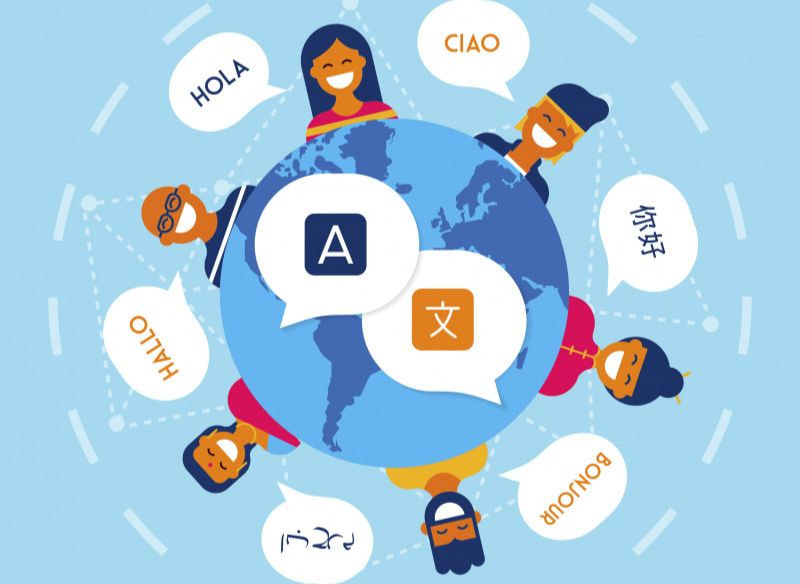
TranslatePress
TranslatePress revolutionizes multilingual WordPress management through its innovative frontend visual translation interface. The free version provides basic functionality, while premium plans start at $79/year for advanced features and automatic translation integrations.
- Frontend Visual Translation Experience: The live preview translation interface allows real-time content editing while viewing the actual website layout. This approach eliminates guesswork about content placement and formatting, particularly valuable for design-sensitive websites.
- HTML Content Translation: TranslatePress translates rendered HTML content rather than database entries, capturing dynamic elements like JavaScript-generated text, plugin outputs, and theme customizations. This comprehensive approach ensures complete website localization without technical limitations.
- Automatic Dynamic Content Detection: The plugin automatically identifies and translates dynamic content including forms, widgets, and third-party plugin outputs. This capability reduces manual configuration requirements while ensuring comprehensive site translation coverage.
- Cost-Effective Automatic Translation: TranslatePress offers competitive automatic translation pricing through direct integration with Google Translate, DeepL, and Microsoft Translator APIs. Users pay only for actual translation usage without monthly subscription minimums.
4. Weglot – The Cloud Solution
Weglot provides a cloud-based translation service requiring zero WordPress core modifications. The subscription-based model starts at $10/month for small websites, scaling based on page views and language quantity requirements.
- Zero WordPress Modifications: Weglot operates entirely through cloud-based content processing, leaving WordPress installations completely unmodified. This approach eliminates plugin conflicts, simplifies updates, and ensures maximum site stability.
- Automatic Content Detection Algorithm: The advanced content detection system automatically identifies and translates all website elements including JavaScript-generated content, AJAX responses, and dynamic form elements. This comprehensive coverage requires no manual configuration or technical expertise.
- Global CDN Translation Delivery: Weglot’s global content delivery network ensures fast translation loading times worldwide while providing automatic backup and redundancy. The cloud infrastructure scales automatically to handle traffic spikes without performance degradation.
- Professional Team Collaboration Tools: The platform includes built-in collaboration features for managing translation teams, tracking progress, and maintaining quality control. These tools support both internal teams and external translator coordination through centralized project management interfaces.
III. Feature-By-Feature Comparison
1. Translation Methods And Workflows
- Automatic Translation Service Integrations: All major plugins support Google Translate integration, with varying levels of additional service support. WPML offers the broadest selection including DeepL, Microsoft Translator, and proprietary solutions. TranslatePress provides direct API integration with transparent usage-based pricing. Weglot includes automatic translation in subscription plans with premium AI services available at higher tiers.
- Manual Translation Management: WPML leads in manual translation workflow sophistication with advanced job assignment, deadline tracking, and translator collaboration tools. Polylang provides basic manual translation interfaces suitable for small teams. TranslatePress offers intuitive frontend editing for direct manual translation. Weglot combines manual editing with professional translator marketplace access.
- Professional Translator Collaboration: WPML’s extensive professional translator network provides the most comprehensive outsourcing options. Weglot offers built-in professional translator services through their platform. Polylang and TranslatePress support external translator collaboration through standard import/export workflows.
2. SEO And Technical Capabilities
- Multilingual SEO Optimization: All plugins provide hreflang tag generation and multilingual sitemap support. WPML offers the most advanced SEO features including automatic canonical URL management and structured data translation. Weglot includes built-in SEO optimization as part of their cloud service. Polylang and TranslatePress provide solid SEO foundations with manual optimization options.
- URL Structure Flexibility: WPML supports all URL structure options including subdomains, subfolders, and separate domains with advanced configuration controls. Polylang provides subdirectory and domain-based options with WordPress multisite integration. TranslatePress focuses on subfolder approaches for simplicity. Weglot automatically handles URL structures through cloud processing.
- RTL Language Support: WPML provides comprehensive RTL support with automatic layout adjustments and CSS modifications. Polylang offers basic RTL support requiring manual theme adjustments. TranslatePress handles RTL through frontend rendering with automatic detection. Weglot includes RTL support as part of their cloud service with minimal configuration required.
3. E-commerce And Dynamic Content

E-commerce and Dynamic Content
- WooCommerce Integration: WPML dominates e-commerce multilingual support with complete WooCommerce integration including multi-currency support, localized checkout processes, and translated product catalogs. Polylang Pro offers solid WooCommerce support with manual configuration requirements. TranslatePress provides automatic WooCommerce translation through HTML rendering. Weglot handles e-commerce content through cloud processing with additional configuration for complex scenarios.
- Dynamic Content Management: TranslatePress excels at dynamic content translation through HTML parsing, capturing JavaScript-generated elements and plugin outputs. Weglot’s cloud processing handles dynamic content automatically. WPML requires specific configuration for dynamic elements but provides comprehensive coverage once configured. Polylang supports dynamic content through WordPress hooks and filters.
4. User Experience And Management
- Language Switcher Customization: All plugins provide multiple language switcher options with varying customization levels. WPML offers the most extensive customization controls including custom templates and advanced styling options. Polylang provides solid switcher options with WordPress widget integration. TranslatePress includes basic switcher functionality with frontend customization. Weglot automatically generates optimized switchers with minimal configuration required.
- Content Editing Interfaces: TranslatePress provides the most intuitive editing experience through frontend visual translation. WPML offers advanced backend editing with translation job management. Polylang uses WordPress’s native editing interface for familiarity. Weglot combines frontend editing with cloud-based management tools.
IV. Pricing Analysis And ROI Considerations
1. Cost Breakdown By Plugin
- WPML Pricing Structure:
WPML’s pricing ranges from $39/year for Multilingual Blog to $159/year for Multilingual CMS Lifetime. The Multilingual Blog license supports one site with basic features, while higher tiers include advanced translation management, WooCommerce support, and unlimited sites. Additional costs include automatic translation credits starting at $20 per million characters and potential professional translation services.
- Polylang Cost Analysis:
Polylang’s free version provides unlimited languages and basic features at zero cost. Polylang Pro costs €99/year per site, adding advanced features like ACF integration, share slug functionality, and duplicate content detection. The total cost of ownership remains low due to minimal additional service requirements.
- TranslatePress Investmen:
TranslatePress pricing starts at $79/year for Personal license (1 site) up to $399/year for Developer license (unlimited sites). Automatic translation costs vary by service provider, with Google Translate charging approximately $20 per million characters. The visual editing approach can reduce manual translation time, potentially offsetting higher license costs.
Weglot Subscription Model subscription pricing starts at $10/month for Starter plan (10,000 words, 1 language) scaling to $490/month for Business plan (2 million words, 10 languages). Enterprise pricing is available for larger implementations. The cloud-based model includes hosting, maintenance, and automatic translation in subscription costs.
2. ROI And Business Impact

ROI and Business Impact
- Global Market Expansion Potential Multilingual websites typically see 70% increases in international traffic within six months of implementation. E-commerce sites report average revenue increases of 42% from international markets, with some verticals achieving 100%+ growth. The investment in multilingual capabilities often pays for itself within 3-6 months through expanded market reach.
- Conversion Rate Improvements Websites offering content in users’ native languages experience 3x higher conversion rates compared to English-only sites. Customer service costs decrease by an average of 25% when support content is available in multiple languages. Trust indicators improve significantly when pricing, policies, and contact information are localized.
- SEO Traffic Growth Projections Properly implemented multilingual SEO can increase organic search traffic by 200-400% within 12 months. International keyword opportunities often have lower competition than English equivalents, providing faster ranking improvements. Local search optimization in target markets can generate 50-80% of new international traffic.
V. Implementation Guide And Best Practices
1. Pre-Installation Planning
- Website Audit and Content Inventory: Conduct comprehensive content audits identifying all translatable elements including pages, posts, media files, form fields, and plugin-generated content. Document custom post types, taxonomies, and complex content structures requiring special handling. Assess current SEO performance and international traffic patterns to establish baseline metrics.
- Target Language and Market Research: Research target markets thoroughly, considering cultural preferences, local competitors, and regulatory requirements. Analyze search volume and keyword difficulty in target languages to prioritize content translation efforts. Consider regional variations within languages (e.g., Spanish for Spain vs. Mexico) and their impact on localization strategies.
- Technical Requirements Assessment: Evaluate hosting capacity for increased resource requirements, particularly for database-heavy solutions. Assess theme and plugin compatibility with chosen multilingual solutions. Plan URL structure changes and their impact on existing SEO performance. Consider CDN requirements for global content delivery optimization.
2. Setup And Configuration
WPML Installation Process Begin with WPML plugin installation and license activation, followed by language configuration and URL structure selection. Configure the Translation Management system for workflow requirements, including translator role assignments and job management preferences. Set up automatic translation services and credit allocations. Install and configure WPML-compatible theme and plugin add-ons as needed.
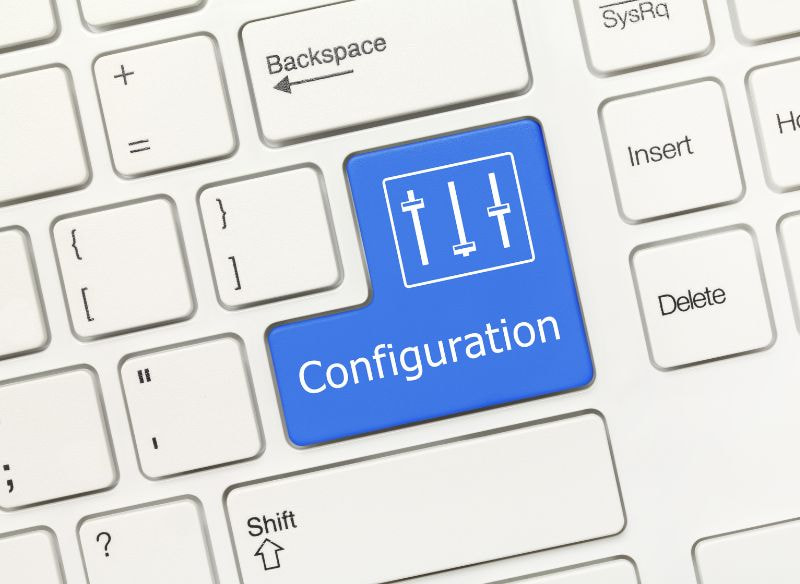
Setup and Configuration
- Polylang Implementation Steps: Install Polylang plugin and configure available languages with appropriate locale settings. Set up language switcher widgets and menu integration. Configure custom post type and taxonomy support for comprehensive content coverage. Implement URL modification preferences and SEO optimization settings. Test theme compatibility and resolve any styling issues.
- TranslatePress Setup Guide: Install TranslatePress plugin and complete initial configuration including language selection and automatic translation service integration. Configure API credentials for chosen translation services and set usage limits. Customize language switcher appearance and positioning. Begin frontend translation process starting with critical pages and navigation elements.
- Weglot Configuration Process: Create Weglot account and obtain API credentials for WordPress integration. Install Weglot plugin and connect to cloud service through API configuration. Select target languages and configure automatic detection preferences. Customize language switcher design and behavior through Weglot dashboard. Begin content translation through cloud-based management interface.
3. Advanced Features Implementation
- Professional Translation Workflow Setup: Establish translation job workflows with clear approval processes and quality control measures. Configure translator role assignments with appropriate permissions and access levels. Implement translation memory systems for consistency across large content volumes. Set up integration with external translation services and project management tools.
- Performance Optimization Techniques: Implement caching strategies optimized for multilingual content delivery. Configure CDN settings for global content distribution with language-specific routing. Optimize database queries for efficient language-specific content retrieval. Monitor and optimize automatic translation API usage to control costs while maintaining performance.
VI. Use Cases By Business Type
1. Small Business And Bloggers
For small businesses and individual bloggers, cost-effectiveness and ease of use are primary considerations. Polylang’s free version provides excellent value for basic multilingual needs, supporting unlimited languages without ongoing subscription costs. The WordPress-native approach ensures long-term compatibility and minimal learning curve for content creators familiar with standard WordPress workflows.
TranslatePress offers an attractive middle-ground option, with its visual editing interface dramatically reducing translation time and complexity. The frontend preview capability helps small business owners maintain brand consistency across languages without technical expertise. Automatic translation integration provides cost-effective content localization for businesses with limited translation budgets.
Small e-commerce operations benefit most from WPML’s comprehensive WooCommerce integration, despite higher costs. The investment in proper multilingual e-commerce functionality typically generates positive ROI within 3-6 months through expanded market reach. For budget-conscious implementations, combining Polylang with manual WooCommerce configuration can provide adequate functionality at reduced costs.
2. E-commerce Stores
E-commerce implementations require sophisticated multilingual capabilities including product catalog management, checkout localization, and customer communication systems. WPML dominates this space with complete WooCommerce integration supporting multi-currency functionality, localized pricing displays, and automated translation of product attributes and variations.
Inventory management becomes complex in multilingual e-commerce, requiring synchronization of stock levels, pricing updates, and promotional campaigns across language versions. WPML’s shared content features ensure consistent product information while allowing localized descriptions and marketing content. The system handles complex scenarios like region-specific product availability and localized shipping calculations.

E-commerce Stores
Customer service localization requires multilingual support for order confirmations, shipping notifications, and return processes. Professional translation of legal content including terms of service, privacy policies, and return policies is essential for regulatory compliance and customer trust. WPML’s professional translator network provides specialized e-commerce translation services understanding commercial content requirements.
Payment gateway integration requires careful consideration of regional preferences and currency handling. Most multilingual plugins support popular payment processors, but complex multi-currency scenarios may require specialized configuration. Consider regional payment method preferences like SEPA in Europe or Alipay in China when planning international expansion.
3. Enterprise And Agencies
Enterprise implementations demand scalable solutions supporting multiple sites, complex workflow management, and integration with existing business systems. WPML’s multisite support enables centralized management of brand portfolios with consistent translation workflows and shared translation memories across properties.
Large-scale content management requires sophisticated workflow tools supporting multiple translator teams, approval processes, and quality control measures. WPML’s Translation Management system provides enterprise-grade features including custom translator roles, deadline management, and project tracking. Integration with external project management tools and translation management systems streamlines large-scale localization efforts.
Development agencies require solutions supporting custom post types, complex theme integrations, and specialized functionality. All major plugins provide developer-friendly APIs and hooks for custom implementations. Consider long-term maintenance requirements and client training needs when selecting solutions for client projects.
Performance optimization becomes critical for enterprise implementations serving global audiences. Database optimization, caching strategies, and CDN integration require careful planning to maintain site performance across multiple languages. Monitor resource usage carefully, particularly for database-heavy solutions managing large content volumes.
VII. Common Challenges And Solutions
1. Technical Issues And Troubleshooting
- Plugin Conflicts and Compatibility: Multilingual plugin conflicts typically arise from duplicate language detection attempts or conflicting URL rewriting rules. WPML maintains extensive compatibility documentation for popular plugins, while Polylang’s WordPress-native approach minimizes conflict potential. When conflicts occur, disable conflicting plugins temporarily to isolate issues, then check for updated versions or alternative solutions.
- Performance Optimization Challenges: Database-heavy multilingual implementations can significantly impact site performance, particularly for high-traffic websites. Implement aggressive caching strategies including language-specific cache buckets and CDN configurations. Monitor database query performance and optimize slow queries through indexing and query restructuring. Consider dedicated hosting resources for multilingual sites serving global audiences.
- RTL Language Implementation: Right-to-left language support requires careful theme modification and CSS adjustments. Many themes lack proper RTL support, requiring custom development or theme switching. Test all interactive elements including forms, sliders, and navigation menus for proper RTL functionality. Consider using specialized RTL-compatible themes for websites serving primarily RTL language audiences.
2. Content Management Strategies

Content Management Strategies
- Quality Control and Consistency Maintenance: Establish clear style guides and glossaries for each target language to maintain translation consistency across content types and translators. Implement review processes for all translated content, particularly technical or legal materials requiring accuracy. Use translation memory systems to maintain terminology consistency across large content volumes and multiple translators.
- Content Update Workflow Management: Develop efficient workflows for updating translated content when source content changes. Implement notification systems alerting translators to content updates requiring translation revisions. Consider using staging environments for testing translated content before publication, particularly for e-commerce sites with frequently changing product information.
- Multilingual SEO Content Strategy: Develop language-specific content strategies considering local search behaviors, cultural preferences, and competitive landscapes. Avoid direct translation of English keyword strategies; instead, research local keyword opportunities and user intent patterns. Create language-specific editorial calendars addressing topics relevant to each target market’s unique interests and needs.
VIII. Plugin Selection Framework
1. Decision Matrix And Evaluation Criteria
- Feature Requirements Assessment: Create comprehensive feature requirement matrices comparing plugin capabilities against specific business needs. Weight requirements by importance, considering both current needs and anticipated future growth. Include technical requirements like theme compatibility, hosting limitations, and integration needs with existing systems.
- Budget and Timeline Considerations: Calculate total cost of ownership including initial licensing, ongoing subscriptions, automatic translation services, and professional translation costs. Consider implementation timeline requirements and available technical resources for setup and ongoing management. Factor in potential revenue impact from delayed international expansion when evaluating implementation timelines.
- Technical Expertise Evaluation: Assess available technical expertise for initial implementation, ongoing maintenance, and troubleshooting. Consider training requirements for content teams managing multilingual workflows. Evaluate long-term sustainability of chosen solutions including vendor stability, community support, and development roadmap alignment.
2. Migration And Switching Considerations

Migration and Switching Considerations
- Platform Migration Strategies: Plan migration workflows carefully to preserve existing SEO performance and user experience. Export existing translations using standard formats compatible with target platforms. Implement proper redirects for URL structure changes and monitor search engine indexing throughout migration processes.
- Data Preservation Methods: Backup all existing multilingual content and configurations before beginning migration processes. Document custom configurations, theme modifications, and integration settings for replication in new systems. Test migration processes thoroughly in staging environments before implementing changes on live websites.
- Timeline and Resource Planning: Develop realistic timelines accounting for content migration, configuration adjustments, and team training requirements. Plan migration phases to minimize disruption to ongoing business operations and international traffic. Allocate sufficient resources for thorough testing and optimization following migration completion.
IX. Frequently Asked Questions
What Is The Best Free WordPress Multilingual Plugin In 2025?
Polylang is the superior free multilingual solution, offering unlimited languages with comprehensive features including custom post types, multilingual widgets, and SEO optimization. Unlike TranslatePress’s free version (limited to one additional language), Polylang provides language switchers, content duplication, and translation management without restrictions, making it ideal for budget-conscious multi-language implementations.
How Much Does It Cost To Make A WordPress Website Multilingual?
Multilingual WordPress costs vary widely. Free options like Polylang cost nothing; premium solutions like WPML start at $39/year; cloud services like Weglot begin at $120/year. Professional translation ranges $0.08-$0.25/word. Total first-year costs: $200-$2,000 for small businesses, $2,000-$10,000 for enterprise implementations including setup, translation, and maintenance.
Do WordPress Multilingual Plugins Affect Website Speed And SEO
Multilingual plugins impact performance differently: WPML/Polylang add database overhead but offer deep integration; TranslatePress increases page load times; Weglot provides minimal impact through cloud processing. Properly configured plugins improve SEO with hreflang tags and localized URLs. Caching and CDN optimization maintain acceptable performance. Regular monitoring ensures good user experience.
Can I Switch Between WordPress Multilingual Plugins Without Losing Content?
Switching multilingual plugins is possible but requires careful planning. Most plugins support XLIFF/CSV export for translation preservation. WPML and Polylang offer migration tools. Key considerations: URL structure changes, SEO impact, content unavailability. Plan during low-traffic periods, backup thoroughly, test in staging environments. Professional assistance recommended for complex migrations.
Which WordPress Multilingual Plugin Works Best With Woocommerce?
WPML offers the most comprehensive WooCommerce integration with complete multi-currency support, localized checkout, and synchronized inventory management. Polylang Pro suits smaller stores with basic multilingual needs through manual setup. TranslatePress and Weglot provide e-commerce support but with limitations. For serious multilingual e-commerce implementations, WPML’s specialized WooCommerce features justify its premium pricing.
X. Conclusion
The multilingual WordPress landscape in 2025 offers sophisticated solutions for businesses of every size and complexity level. WPML remains the premium choice for complex implementations requiring advanced workflow management and comprehensive e-commerce integration. Polylang provides excellent value through its free version and WordPress-native approach. TranslatePress innovates with visual editing capabilities that simplify the translation process. Weglot offers cloud-based convenience for businesses preferring managed solutions.
Success in international markets demands more than simple content translation—it requires comprehensive localization strategies addressing cultural preferences, local SEO optimization, and technical implementation excellence. The investment in proper multilingual capabilities typically generates positive ROI within months through expanded market reach and improved user engagement.
Your global expansion journey begins with selecting the right multilingual solution for your specific requirements and growth objectives. Whether targeting specific language markets or preparing for worldwide expansion, the plugins examined in this guide provide the foundation for successful international digital presence.
For professional WordPress development and multilingual website implementation, consider partnering with Temply Studio for expert guidance and custom solutions tailored to your global expansion needs.

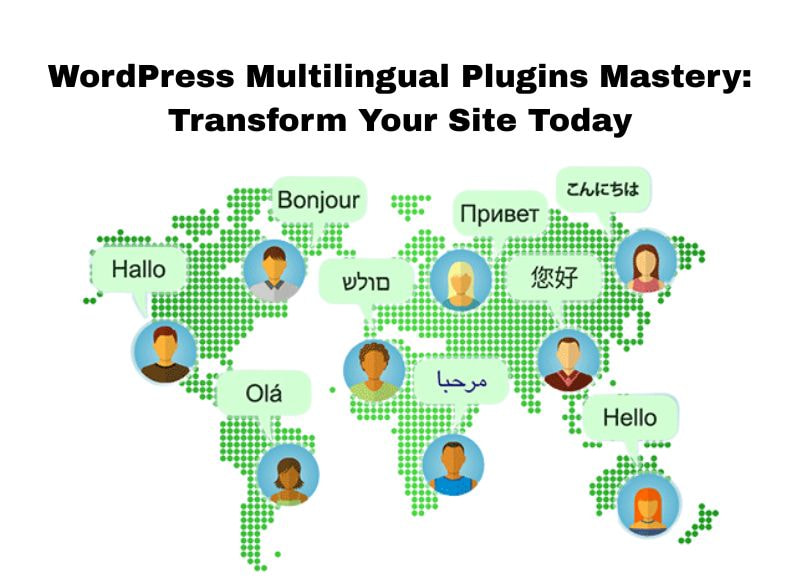




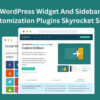

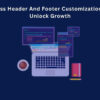
Add comment